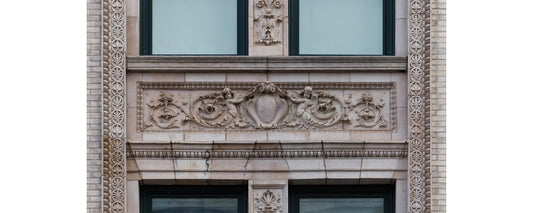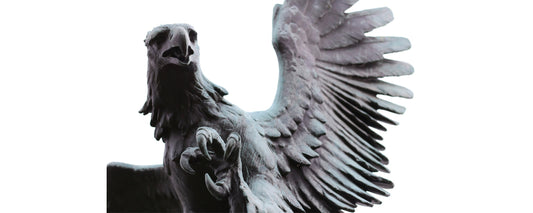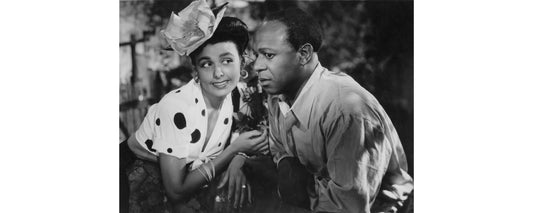The final production at Long Wharf Theatre’s longtime home was a play called Flying Bird’s Diary, read last weekend by a cast of 10 behind a tidy arc of music stands. In a scene that ends the play’s first half, a Mohegan girl named Flying Bird, played by DeLanna Studi, receives news from an older boy and close confidant named William (Trevor Hosteen McChristian). They had come of age together in the 1830s, amid strife between their tribe and European descendants in eastern Connecticut, with the attendant question of how much of their own cultural identity they would have to abandon in order to reconcile with the now dominant culture. William has decided to accept work on a whaling ship. “I’m planning on heading out to sea. Tomorrow.”
By this point, Flying Bird has had her own experiences with the prevailing culture, including in a classroom run by a stern missionary (Jessica Ranville). “When the English arrived in Connecticut,” the teacher tells the class, “the Mohegan Indian chief Uncas made friends with them so his people could become civilized.” Flying Bird, who is then 14 and known only by her English name, Fidelia, speaks up in her native tongue, then translates. “Miss Raymond, I said that Uncas’s name is correctly pronounced Once-as, which means ‘Fox’ in English.”
“Fidelia, it’s your job as student to speak only English in the classroom. Is that understood?”
“No,” Flying Bird says with weighty sincerity, and it’s a moment when the reading takes flight from recitation.
sponsored by
By the time William is announcing his departure, Flying Bird has left the school to devote herself to preserving the Mohegan language, recording words in the diaries that gave the real Flying Bird her place in American history. Her grandmother, Nonner Martha (Joan Henry), encourages her to stay home and make the woods her school. “In these woods, you get to know rocks and trees, the plants, the animals as relatives… Because we sacrifice for relatives and in turn they sacrifice for us.” The first half of the play climaxes with news of the burning of a Mohegan burial ground by “overseers” in Norwich.
So it’s with some dread that William awaits Flying Bird’s reaction to his announcement, but it turns out the dread is misplaced. Leaving on a whaling ship is not necessarily abandonment, she suggests. “The sea is the only place that an Indian man can earn a fair wage. And be free of thought, word, and deed.” The second half of the play begins with his return after 10 years, with a marriage proposal and an offering of venison steaks to prove that, after a decade hunting with a harpoon, he can still hunt with a bow and arrow.
Flying Bird’s Diary is a play of ideas about place and identity that happened to resonate with the imminent departure of Long Wharf Theatre from 222 Sargent Drive, in favor of an “itinerant” existence producing plays on various stages, formal or not, around the city. The express hope on the part of the directors when they announced the closure earlier this year was that more New Haveners will get to experience the theater when it’s produced in spaces throughout New Haven. “Although we are moving around,” said artistic director Jacob Padron in his introduction to Sunday’s performance, “everything that you love about our theater is coming with us.”
As if to illustrate the portability of Long Wharf (and perhaps by logistical necessity as they prepare to move), the theater has used its main stage this season for minimally produced readings that were also workshops—demonstrations of works in progress with an emphasis on audience feedback—and they have been an interesting study of what can be subtracted by a theater space and still be experienced as theater. The audacious quality of Long Wharf Theatre has had a lot to do with its unlikely location in a food terminal. You drove past Lamberti’s Italian Sausage delivery trucks before you saw the entrance, the implication being that a stage could go up anywhere. But it was also a professional-grade theatrical space inside its warehouse shell, unusually intimate, with acoustics and a stage that extended into the audience—wharf-like—a construction that honored an audience’s faith in pure performances, even when a full set was erected behind the actors.
sponsored by
In Flying Bird’s Diary, theater arose from the stage directions—read sonorously by Bradley Lewis—which took on the resonance of good storytelling. “Nonner Martha approaches Granny, who is surrounded by evil spirits. She puts on her mask in shadow, sings, dances, and rattles to frighten them away. The evil spirits exit. Granny sits up. Nonner Martha sits down. The cry of the whippoorwill fills the air. The storm passes. Nonner Martha and Flying Bird head home. Nonner Martha falls asleep in her chair. Flying Bird writes furiously in her diary.” A drum and a gourd rattle—the only props to accompany the reading—and chants provided a live soundscape.
The stage was for the purpose of the reading a purely practical space, but the production made clever use of its apparatus to approximate its imagined setting. Music stands were grouped and outfitted so actors could occupy any one of them to establish movement or proximity. And the stands sometimes doubled as props. When Flying Bird stumbled climbing a granite boulder, Studi popped the latch holding her music stand up. When Flying Bird righted herself, Studi slowly righted the stand. Later, Flying Bird’s mother, Sally (Allison Hudson Hicks), introduces a Christmas tree to their tiny cabin, and a stand becomes a prop for the tree, a perfect representation of what Nonner Martha sees it for. “You killed this poor young spruce. Why would you bring it inside?”
“It’s a tree you decorate,” says Sally triumphantly.
“With what?” Flying Bird pipes in. “Birds and squirrels?”
Sally, with grating and sometimes comic stringency, brings assimilationist views back to her tiny multi-generational cabin-hold, returning with Christmas gifts from Norwich, where she sews for white families. She presents her mother and daughter with, respectively, a bonnet and a pink dress. (And here is where just two additional props would have been an asset.) Nonner Martha as read by Henry was beautifully serene in her refusal to adopt such alien fripperies. Flying Bird, by contrast, is more expressly resistant to wearing a proverbial pink dress, her lines sometimes taking on the contours of modern rebelliousness. The play proceeds in large part with the other voices around her urging her to compromise if she wants to preserve her way of life.
The crucial moment of the play, when a 64-year-old Flying Bird agrees to turn her diaries over to an anthropologist for study, is a compromise presented gently. She is vouchsafing the survival of Mohegan culture to a white man. The anthropologist, Frank Speck (Ryan Victor Pierce, a.k.a. Opalanietet) has a sincere but scholarly interest in Mohegan language. Tribal customs are worthy of study, he says, for how they inform our understanding of humanity. “But I am not merely human,” protests Flying Bird. “I am a bird and a wolf.”
“And those are exactly the sorts of superstitions I want to learn more about,” he replies. His intentions aren’t the same as Flying Bird’s, but for her they’re serviceable. The play establishes that as Flying Bird aged in the half century covered in its second act, her preservation efforts became a source of bemusement for Mohegans who had taken up residence in Norwich and speak only English. For the time being, preservation for future generations of Mohegans would have to rely on white people.
The play can often be as formal as a pageant in scenes like this, where in three minutes Flying Bird meets Speck for the first time, listens to his proposal and agrees to turn over her life’s work to him. But the play in its respect for and representation of her culture is testimony that she made a sound decision.
Written by David Zukowski.









